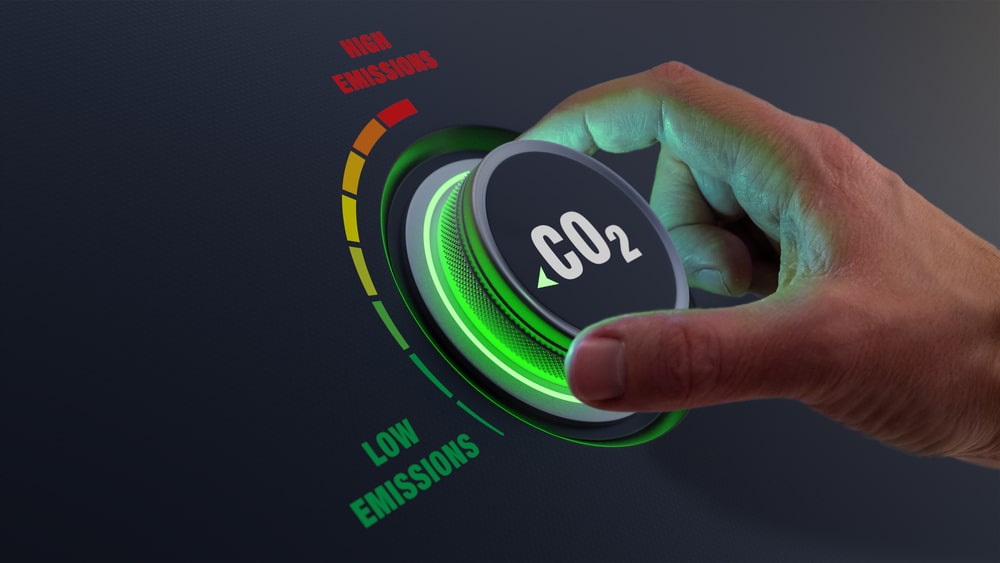Features - Business
Why Scope 3 needs to be on your sustainability agenda

At the COP26 climate summit in November 2021, the UK Green Building Council (UKGBC) unveiled its Net Zero Whole Life Carbon Roadmap (the Roadmap). This is for the UK built environment, which ‘aims to outline a common vision and agree upon industry-wide actions for achieving net zero carbon in the construction, operation, and demolition of buildings and infrastructure in the UK.’
Similarly, in response to the government’s ‘Ten Point Plan for a Green Industrial Revolution’, which was published at the end of 2020, the Construction Leadership Council (CLC) responded with its ‘CO2nstructZero’ plan, which it says sets out how the industry can collectively meet the net zero target. In it, the CLC outlines nine key priorities where emissions can be reduced, that cover transport, buildings and overall construction activity.
A crucial part of the success of both of these plans will be ensuring everyone across the whole construction value chain – developers, architects, engineers, contractors and product manufacturers – are fully committed to sustainability and have strong carbon reduction plans in place.
This will involve addressing both ‘direct’ and ‘indirect’ emissions, which are outlined in the Greenhouse Gas (GHG) Protocol as Scope 1 (direct), 2 (direct power-related) and 3 (indirect).
For companies in the construction sector, this can impact them in a number of ways, depending on where their business sits in the supply chain. As an ‘influencer’ business, they may be required to provide support to companies within their supply chain to help paint an accurate picture of the emissions generated beyond their own operations. Or, they could be in an ‘influencee’ business, where a company they supply is now requiring them to change how they work so the ‘influencer’ company can meet their own sustainability targets.
Or, they could be both an influencer and influencee business, wanting to reduce their own indirect emissions while also needing to meet the sustainability requirements of another company they supply.
Therefore, it can be easy to see why addressing both direct and indirect emissions can be a hugely complex area to navigate.
What are the three Scopes?
Firstly, it makes sense to look at what the three ‘Scopes’ are. According to the GHG Protocol, they are defined as:
- Scope 1 covers direct emissions from owned or controlled sources, such as buildings and premises. This includes fuel combustion and company vehicles
- Scope 2 covers indirect emissions from the generation of purchased electricity, steam, heating and cooling
- Scope 3 includes all other indirect emissions that occur in a company’s value chain. This includes business travel in non-company vehicles as well as employee commuting. It also includes emissions arising from your purchased goods and services and both upstream and downstream transportation and distribution.
Typically Scope 3 can account for 80-90% of an organisation’s emissions. However, while the Scope 3 standard is the only internationally accepted method of measuring value chain emissions, measuring Scope 3 emissions can be complex and time-consuming.
That is why collaboration is crucial. With more organisations in both the public and private sectors now declaring Scope 3 as part of their decarbonisation strategies, the importance of understanding what this means for your business’s net zero plans will only grow.
Deciding which areas of Scope 3 are most relevant
Measuring Scope 3 emissions can be challenging as it involves acquiring adequate and accurate data from across the value and supply chain. As the UKGBC’s Roadmap says, all businesses in the sector have a role to play in ‘increasing data transparency via central databases. Data ownership will vary across each stakeholder, requiring a comprehensive effort across the value chain.’
So, the first step towards effective Scope 3 reductions is deciding where to focus your efforts for maximum impact.
There are 15 distinct Scope 3 categories, ranging from business travel to leased assets, all relating to the indirect emissions which come from your business’s value chain. Depending on what your business does, some will deliver more valuable and measurable results than others.
When deciding where to focus your efforts, there are several things to consider.
For each of the 15 Scope 3 categories, begin by using high-level data to determine the contribution it makes to your overall GHG emissions. Then, go a little deeper by using criteria such as size, influence or risk to the business to decide whether the category should be considered a relevant focus area for your business’s Scope 3 emissions reduction activity.
Collaboration is key
The administrative challenge of drawing data together from disparate sources and turning it into meaningful information that can be acted upon requires engaging with your suppliers.
This means that successful progress begins with the complex task of engaging a supply chain, which may exist across geographical and cultural boundaries. It’s no mean feat, and will create different challenges for each business.
For us, there are five steps to take for better collaboration:
- Set clear expectations for your suppliers. Consider incentivising supply chain partners to improve their carbon reduction measures and their data gathering methods. Have a clear criteria for any new suppliers you enlist, as well as internal procurement targets that have environmental and ethical standards built in
- Set up interviews with suppliers to better understand their processes and people, and to get a view on where improvements could be made, as well as their obstacles to carbon reduction
- Facilitate workshops with key suppliers to help them understand where action could be taken on carbon reduction. This will also provide a forum for peer-to-peer support and will help to foster innovation and encourage an exchange of best practices
- Provide co-branded training materials for your suppliers’ teams, to help them spread the word on net zero and get everyone behind the efforts you are making to reduce carbon
- Get your internal stakeholders onboard right from the outset. The best results will be achieved by having input and oversight from right across your business, including procurement teams and the c-suite. Your net zero strategy needs to align with broader business objectives if you want to ensure that everyone is invested in driving carbon reduction action forward.
The benefits of addressing Scope 3
As the importance of measuring Scope 3 emissions grows, businesses in the construction sector will need to measure both the carbon impact of their operations and the rest of their upstream and downstream value chain.
Although calculating Scope 3 emissions can be complex, there are several benefits to taking a proactive approach. As well as boosting efficiency and productivity across the value chain, it will also set your organisation apart as a sustainability leader, helping to unlock commercial opportunities as well as retaining and attracting fresh talent.
That is why we have created a new guide – ‘Scope 3 and Your Road to Net Zero’ – to provide advice and ideas on where to start, which can be downloaded here.
Article submitted by Anthony Ainsworth, COO at npower Business Solutions
If you would like to read more stories like this, then please click here
Related Articles
More Features
- Building Britain: Ibstock ready to play their part in getting Britain building again
25 Jul 24
After Labour’s landslide win in July’s General Election, incumbent Chancellor of the Exchequer Rachel Reeves
- Housebuilding manifesto pledge scrutinised
20 Jun 24
We take a look at the response from around the sector.
- The drive towards electrifying the off-highway sector
10 May 24
The importance of electrification within the off-highway sector.






